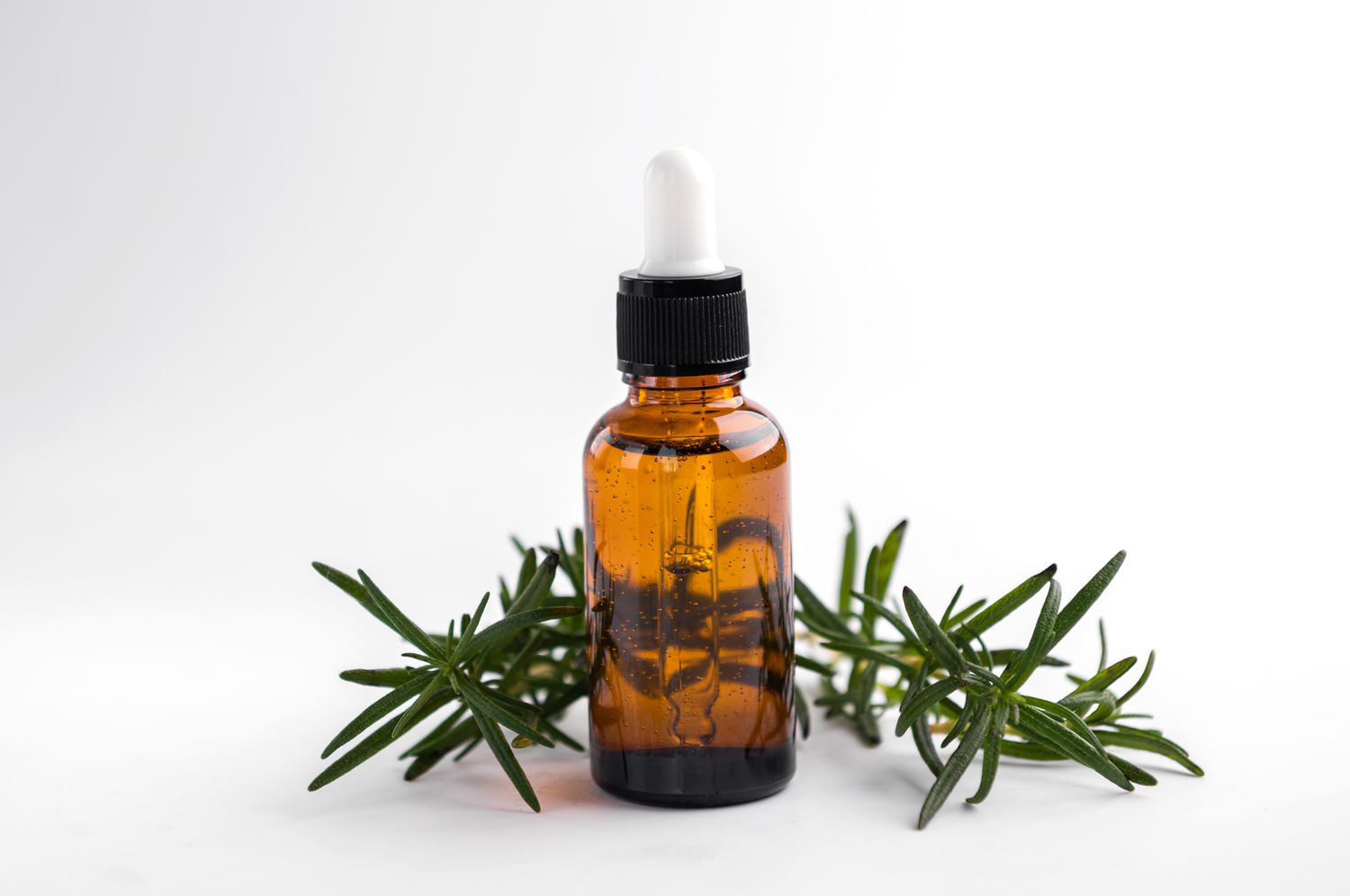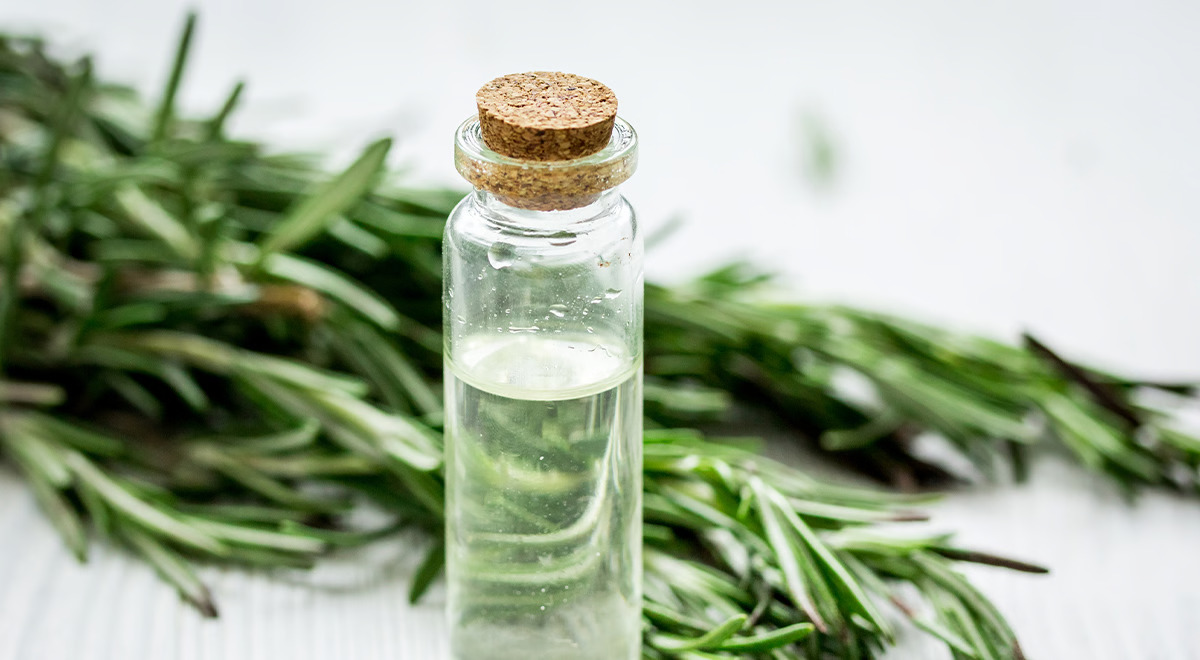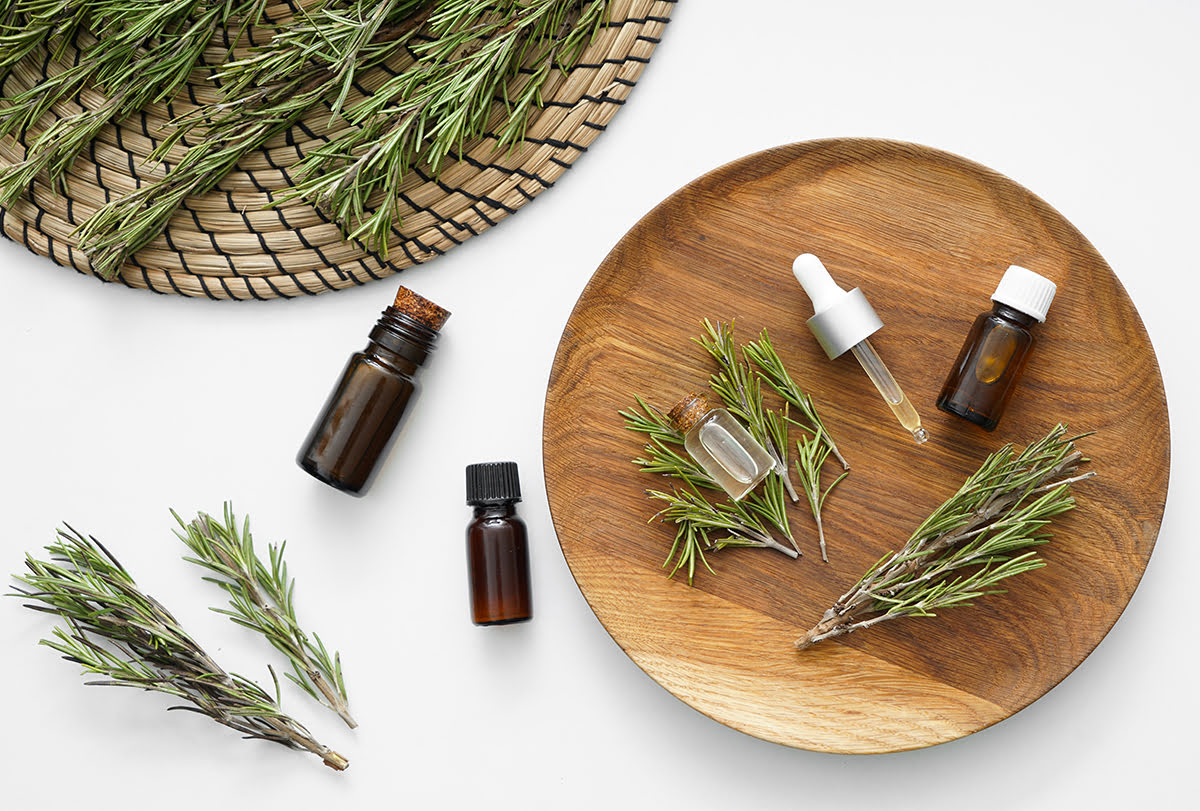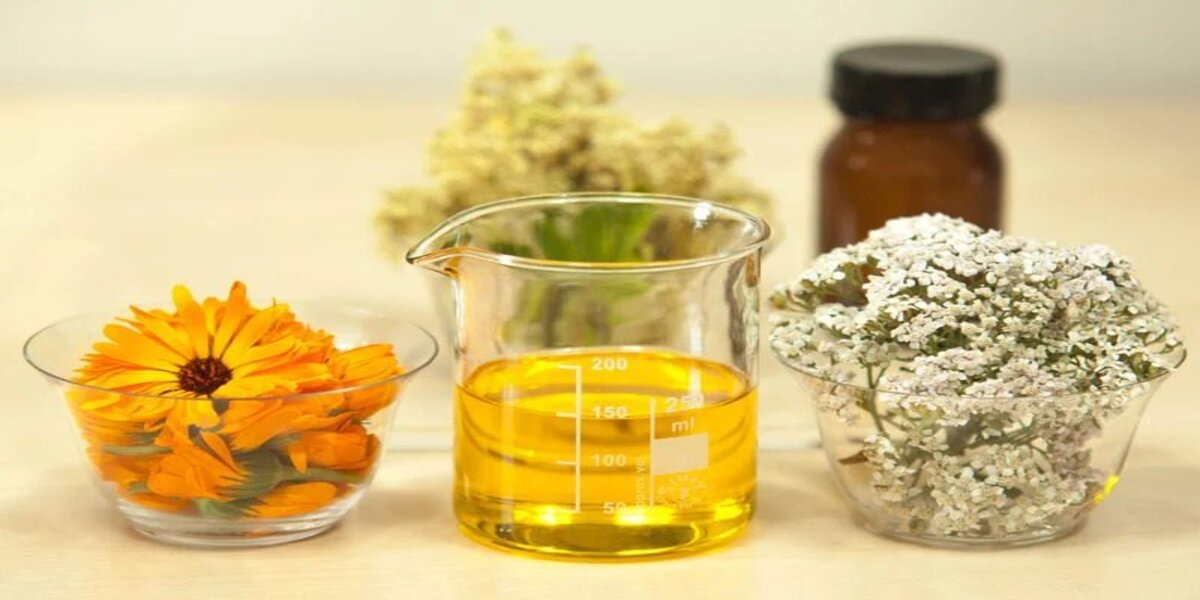Home>Gardening Techniques>DIY Projects>How To Do A Rosemary Hair Rinse
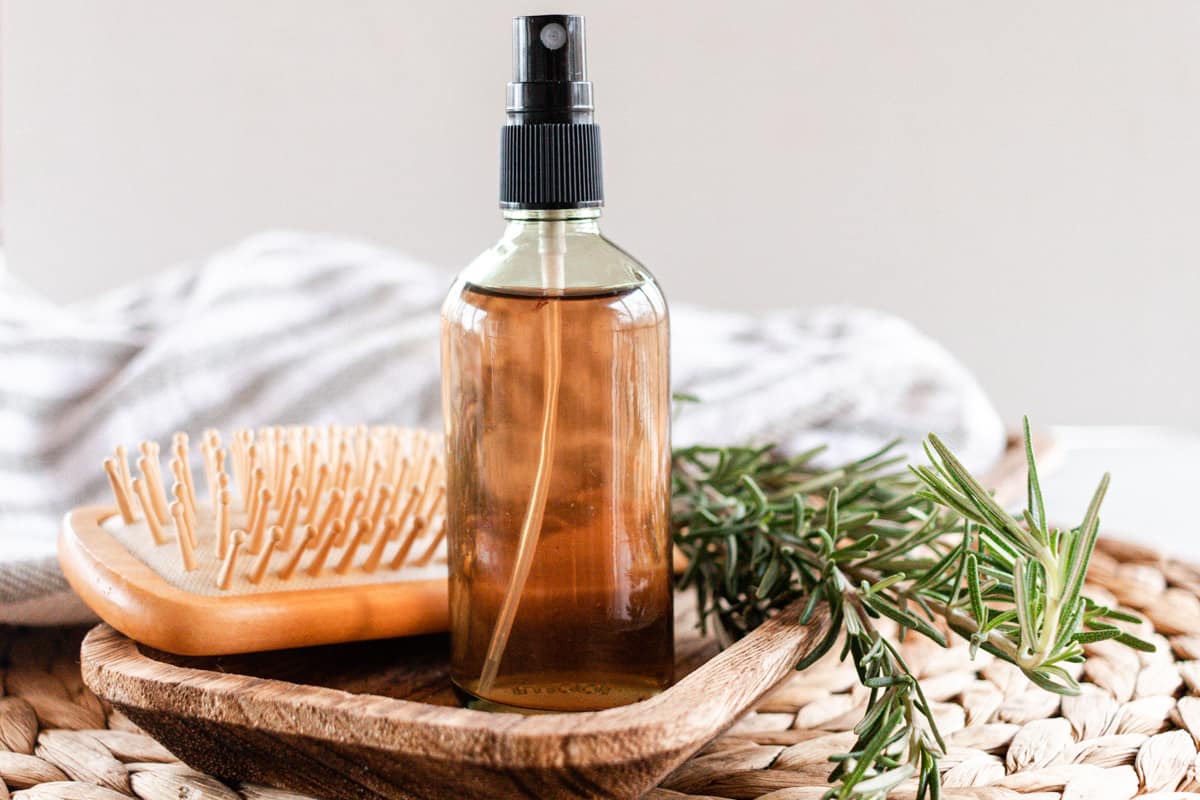

DIY Projects
How To Do A Rosemary Hair Rinse
Published: February 1, 2024
Learn how to make a nourishing DIY rosemary hair rinse at home. Enhance your hair's health and shine with this easy DIY project.
(Many of the links in this article redirect to a specific reviewed product. Your purchase of these products through affiliate links helps to generate commission for Chicagolandgardening.com, at no extra cost. Learn more)
Table of Contents
Introduction
Welcome to the world of do-it-yourself (DIY) projects! Whether you’re a seasoned DIY enthusiast or new to the craft, there’s something truly satisfying about creating and fixing things with your own hands. From woodworking and home improvement to crafting and décor, DIY projects offer a wonderful opportunity to unleash your creativity and showcase your skills.
One popular area of DIY projects is in the realm of self-care. Taking care of yourself and pampering your body doesn’t have to mean a trip to the spa or a hefty price tag. With a little know-how and the right ingredients, you can create your own beauty and hair treatments right at home. One such DIY hair care technique gaining popularity is the rosemary hair rinse.
Derived from the aromatic herb, rosemary, this hair rinse can revitalize your locks and provide a multitude of benefits for your hair and scalp. Not only is it simple to make, but it’s also cost-effective and free from the harsh chemicals often found in commercial hair products. In this article, we’ll explore the benefits of using a rosemary hair rinse, learn how to make it, and discuss the application process.
So, if you’re ready to embark on a journey of natural hair care and enhance the health and appearance of your locks, keep reading. Let’s dive into the wonderful world of rosemary hair rinses and discover the transformative power it can have on your hair.
Benefits of Rosemary Hair Rinse
A rosemary hair rinse offers a wide range of benefits for your hair and scalp. Let’s take a closer look at some of the advantages of incorporating this natural treatment into your hair care routine:
- Promotes Hair Growth: Rosemary is known for its ability to enhance hair growth. It stimulates blood circulation in the scalp, which in turn promotes hair follicle health and encourages new hair growth.
- Prevents Hair Loss: If you’re dealing with excessive hair loss or thinning hair, a rosemary hair rinse can be a valuable addition to your routine. The antioxidants in rosemary help protect the hair follicles from damage, preventing hair loss and promoting thicker, fuller hair.
- Soothes Scalp Irritation: If you suffer from a dry, itchy scalp, rosemary can provide relief. Its antifungal and antibacterial properties help calm inflammation and reduce itchiness, leaving your scalp feeling soothed and balanced.
- Controls Dandruff: Dandruff can be a persistent and embarrassing problem. The antimicrobial properties of rosemary help combat fungal infections that often contribute to dandruff. Regular use of a rosemary hair rinse can help keep your scalp clean and dandruff-free.
- Strengthens Hair: Weak and brittle hair can be a result of damage from styling products, heat, or pollution. Rosemary contains nutrients that strengthen the hair shaft, reducing breakage and promoting stronger, healthier hair.
- Enhances Shine: Dull, lackluster hair can be transformed with the help of a rosemary hair rinse. The natural oils in rosemary add shine and luster to your hair, leaving it looking vibrant and glossy.
- Natural Hair Conditioner: Rosemary is a natural conditioner that can leave your hair feeling soft and silky. It helps to restore moisture balance and improve the overall texture of your hair.
With all these benefits packed into one simple DIY treatment, it’s no wonder that rosemary hair rinse has become increasingly popular amongst those seeking natural and effective hair care solutions. Now that we’ve explored the benefits, let’s move on to learning how to make your own rosemary hair rinse at home.
How to Make Rosemary Hair Rinse
Making your own rosemary hair rinse is incredibly simple and requires just a few basic ingredients. Here’s a step-by-step guide on how to make a rosemary hair rinse at home:
- Gather your ingredients: You’ll need fresh rosemary sprigs, water, and a pot for boiling.
- Prepare the rosemary: Take a handful of fresh rosemary sprigs and rinse them thoroughly to remove any dirt or debris.
- Boil the water: Fill a pot with two cups of water and bring it to a boil.
- Add the rosemary: Once the water reaches a boil, add the rosemary sprigs to the pot. Allow them to simmer for about 15-20 minutes.
- Strain the mixture: After simmering, remove the pot from heat and let it cool for a few minutes. Then, strain the liquid to separate the rosemary leaves from the hair rinse.
- Store the rinse: Transfer the strained liquid into a clean container, such as a glass jar or bottle. Let it cool completely before storing it in the refrigerator.
That’s it! Your homemade rosemary hair rinse is ready to use. It’s important to note that the hair rinse should be used within a week to ensure its freshness and effectiveness. Now, let’s move on to the next section to learn how to apply the rosemary hair rinse to your hair.
Application Process
Applying a rosemary hair rinse is a simple and straightforward process. Follow these steps to effectively incorporate it into your hair care routine:
- Shampoo your hair: Start by washing your hair with your regular shampoo. This will remove any dirt, oil, or product buildup from your hair and prepare it for the hair rinse.
- Prepare the hair rinse: Take the homemade rosemary hair rinse out of the refrigerator and allow it to come to room temperature. You can also warm it slightly in a microwave-safe container for a more soothing application.
- Apply the rinse to your hair: Gently pour the rosemary hair rinse over your clean, damp hair, starting at the roots and working your way down to the ends. Massage your scalp and hair to ensure even distribution of the rinse.
- Leave it on: Once applied, leave the rosemary hair rinse on your hair for about 5-10 minutes. This allows the beneficial properties of the rosemary to be absorbed by your hair and scalp.
- Rinse thoroughly: After the desired time has elapsed, thoroughly rinse your hair with lukewarm water to remove any remaining residue. Avoid using hot water, as it can strip your hair of its natural oils.
- Follow with conditioner: After rinsing, you can choose to follow up with your regular hair conditioner if desired. This will help further nourish and moisturize your hair. Rinse your hair with cool water to seal the cuticles and enhance shine.
Pro tip: For best results, use the rosemary hair rinse once a week or as needed. Overuse may lead to dryness, so it’s important to find a balance that works for your hair type and needs.
Now that you know how to apply a rosemary hair rinse, let’s move on to some additional tips and considerations to keep in mind when using this natural hair care treatment.
Tips for Using Rosemary Hair Rinse
Using a rosemary hair rinse can be beneficial for your hair and scalp. To make the most out of this natural treatment, consider the following tips:
- Adjust the concentration: Depending on your hair’s needs, you can adjust the concentration of the rosemary hair rinse. For a stronger solution, use more rosemary sprigs or let them simmer for a longer duration. For a milder rinse, reduce the amount of rosemary or dilute it with water.
- Experiment with other ingredients: While a basic rosemary hair rinse is effective on its own, you can enhance its benefits by adding other beneficial ingredients. Consider adding a few drops of essential oils like lavender or tea tree oil for added fragrance and nourishment.
- Customize for your hair type: Different hair types have different needs. If you have oily hair, focus the hair rinse more on the scalp area. For dry or damaged hair, concentrate on the ends and mid-lengths. Adjust the application process to cater to your specific hair type and concerns.
- Be patient: Like any natural treatment, the effects of a rosemary hair rinse may not be instant. It may take a few weeks of regular use to see noticeable results. Be patient and consistent with your hair care routine to reap the long-term benefits.
- Protect your clothes: Rosemary can leave stains on clothing, so make sure to wear an old shirt or protect your shoulders with a towel while applying the rinse to avoid any unwanted marks.
- Store properly: Store the remaining rosemary hair rinse in a sealed container in the refrigerator. This will help preserve its freshness and prevent any bacterial growth.
- Consider a patch test: If you have known allergies or sensitive skin, it’s a good idea to perform a patch test before applying the rosemary hair rinse all over your scalp. Apply a small amount to a discreet area of your skin and wait 24 hours to check for any adverse reactions.
By following these tips, you can optimize your experience with a rosemary hair rinse and enjoy all the benefits it offers for your hair and scalp. Now that you’re equipped with these additional insights, you’re ready to embark on your DIY hair care journey.
Potential Side Effects
While a rosemary hair rinse is generally safe and well-tolerated by most people, it’s important to be aware of potential side effects that could occur. Keep the following points in mind when incorporating a rosemary hair rinse into your hair care routine:
- Allergic Reactions: Some individuals may be allergic to rosemary. If you experience any signs of an allergic reaction, such as itching, redness, or swelling, discontinue use immediately and consult a healthcare professional.
- Sensitivity: Rosemary can be a potent herb, and some people may have sensitive skin or scalp. If you notice any irritation or discomfort during or after using the rosemary hair rinse, reduce the concentration or frequency of use.
- Interactions with Medications: If you are taking any medications or have underlying medical conditions, it’s best to consult with your healthcare provider before using a rosemary hair rinse. Certain medications or conditions may interact with rosemary, so it’s important to ensure its safety for your individual circumstances.
- Staining: As mentioned earlier, rosemary has the potential to leave stains, especially on light-colored hair or clothing. To minimize the risk of staining, thoroughly rinse out the hair rinse and avoid contact with clothing or towels.
- Excessive Dryness: Overuse of the rosemary hair rinse can lead to dryness, especially for those with already dry or brittle hair. Monitor your hair’s response to the rinse and adjust the frequency of use accordingly.
- Eye Irritation: Be cautious when applying the rinse near your eyes. If the rinse comes into contact with your eyes, immediately rinse with plenty of water and seek medical attention if irritation persists.
It’s important to remember that individual experiences can vary, and what may work well for one person may not work for another. Pay attention to your body’s response and make adjustments as needed.
If you have any underlying scalp conditions, severe hair loss, or concerns about using a rosemary hair rinse, it’s always wise to consult a dermatologist or healthcare professional for personalized advice.
Now armed with knowledge of the potential side effects, you can proceed with caution and make an informed decision about using a rosemary hair rinse for your hair care needs.
Conclusion
Embarking on DIY projects can be incredibly rewarding, and when it comes to hair care, a rosemary hair rinse is a simple yet effective way to nurture and revitalize your locks. By harnessing the power of nature and creating your own hair care treatment, you can experience the numerous benefits that rosemary has to offer.
From promoting hair growth and preventing hair loss to soothing scalp irritation and controlling dandruff, a rosemary hair rinse can be a game-changer for your hair and scalp health. Its natural properties nourish and strengthen your locks, leaving them shiny, vibrant, and full of life.
Creating a rosemary hair rinse is a breeze, and the application process is straightforward. Remember to make necessary adjustments based on your hair type and needs, and always perform a patch test before fully incorporating the rinse into your routine.
As with any DIY project, it’s important to be aware of potential side effects and exercise caution when using a rosemary hair rinse. Pay attention to your body’s signals and consult a healthcare professional if needed.
So go ahead, embrace the world of DIY hair care and give your locks a natural boost with a homemade rosemary hair rinse. Enjoy the process of nurturing your hair and feel the confidence that comes with healthy, beautiful locks.
